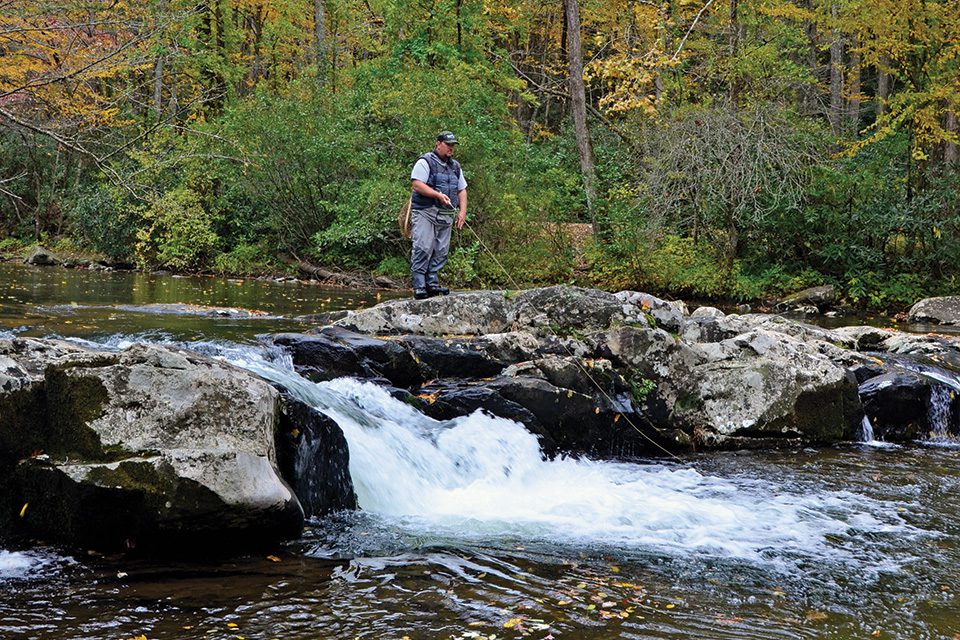By TAM Staff
Every river is its own enclosed ecosystem. The specifics rarely translate from one fishery to the next when it comes to trout fishing. But there’s at least one thing you can count on when the first cold fronts roll in and autumn leaves color the banks of our mountain trout streams: the fishing will be good.
The small window between hot summer and cold winter is a trout’s opportunity to fatten up for the lean months. But nature is not kind. Fall does not bring massive hatches of meaty mayflies like spring. Feeding opportunities can be sparse, which forces trout to be opportunistic. It is advantageous for anglers.
Here are some general guidelines to remember when you’re fishing for trout in fall:
- Conditions: Although water temperatures are cooling, levels remain low and clear in most streams. This makes trout wary. Wade stealthily and use longer, thinner leaders to avoid spooking fish.
- Meat Theory: Trout pack on weight in fall, particularly brown trout, which are also fueling up for the spawn. Consider fishing larger flies than you normally would to give them a mouthful they can’t refuse. Streamers target the largest, most aggressive fish in a run. Large articulated streamers might seem outlandish, but they’re the deal if you’re willing to sacrifice numbers for size. Use a loop knot to tie streamers to tippet, it’ll give your fly more action, and consider an intermediate sinking line or a sink-tip to get your streamers down. Fluorocarbon leaders are also a good idea for stripping big streamers or drifting heavy stonefly nymphs through deep holes. Fluorocarbon sinks, and its abrasion resistance helps your rig stand up to the rock and wood you’ll encounter.
- Spawning Browns: Brown trout run upstream to spawn this time of year. That means big browns show up in places you wouldn’t normally expect. Go ahead and fish the deep undercut at the tail-out of a pool, but look to the head of the run, too. There might be a giant butterbelly up in the riffles getting ready to move up the creek.
- Dry Flies: If you just have to fish a dry fly, most of the topwater action will go on in the afternoon and evening. Terrestrials that carried fish through the summer are still a primary food source until the first hard frost. Be sure to carry hoppers, beetles and ants.
Some areas see hatches of October Caddis, also called Autumn Sedge. These big orange bugs are mostly nocturnal, but trout will be looking for them.
Other than that, most fall insect life is small. Blue-winged olives and midges are what trout rise to when cool weather settles in. Bring your box of size 18-24 BWOs and Griffith’s Gnats. Try fishing them behind a large, high-floating attractor pattern so you can track those tiny flies on the water.
